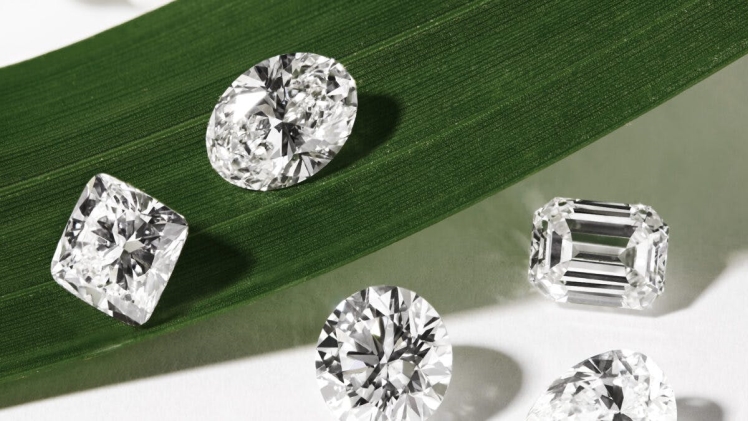Diamonds are some of the most prized gemstones in the world, but they are also some of the rarest. This has led to a growing interest in lab made diamonds, which are created in a laboratory setting and have the same chemical and physical properties as mined diamonds.
The frst synthetic diamonds were created in the early 1900s, but they were not very good quality. It was not until the 1950s that scientists developed the high-pressure, high-temperature (HPHT) process, which is now the most common method for creating synthetic diamonds.
The HPHT process involves heating carbon in a pressurised chamber to a very high temperature. This process can create diamonds that are virtually indistinguishable from mined diamonds.
In the 1970s, scientists developed another method for creating synthetic diamonds, called chemical vapor deposition (CVD). The CVD process involves depositing carbon atoms onto a substrate in a chamber flled with a gas. This process can create diamonds that are smaller than those created using the HPHT process, but they can be grown in a variety of shapes and sizes.
The production of synthetic diamonds has increased signifcantly in recent years. In 2020, the global synthetic diamond market was valued at $2.2 billion, and it is expected to reach $8.5 billion by 2025.
The growth of the synthetic diamond market is being driven by a number of factors, including:
The increasing demand for diamonds, as they are seen as a symbol of luxury and status.
The rising cost of mined diamonds, as the supply of diamonds has been declining in recent years.
The growing awareness of the environmental and ethical concerns associated with mined diamonds.
Synthetic diamonds are often marketed as a more ethical and sustainable alternative to mined diamonds. They are also typically more affordable than mined diamonds, which makes them a more attractive option for some consumers.
However, there are also some drawbacks to synthetic diamonds. Some people believe that they are not as valuable as mined diamonds, and they may not be as durable. Additionally, some synthetic diamonds have been found to contain impurities that can affect their color and clarity.
Overall, the synthetic diamond market is growing rapidly. Synthetic diamonds are becoming more popular as a more ethical and affordable alternative to mined diamonds. However, there are still some concerns about the quality and durability of synthetic diamonds.
Here are some additional details about the history of synthetic diamonds:
1879: The frst synthetic diamonds were created by Auguste Verneuil in France. Verneuil used the fame fusion method, which involves melting carbon in a fame and then allowing the molten carbon to solidify onto a substrate.
1954: The HPHT process was developed by General Electric. The HPHT process involves heating carbon under high pressure and temperature. This process can create diamonds that are virtually indistinguishable from mined diamonds.
1970: The CVD process was developed by the Union Carbide Corporation. The CVD process involves depositing carbon atoms onto a substrate in a chamber flled with a gas. This process can create diamonds that are smaller than those created using the HPHT process, but they can be grown in a variety of shapes and sizes.
Here are some additional details about the present status of synthetic diamonds:
Market size: The global synthetic diamond market was valued at $2.2 billion in 2020, and it is expected to reach $8.5 billion by 2025.
Growth drivers: The growth of the synthetic diamond market is being driven by a number of factors, including the increasing demand for diamonds, the rising cost of mined diamonds, and the growing awareness of the environmental and ethical concerns associated with mined diamonds.
Marketing: Synthetic diamonds are often marketed as a more ethical and sustainable alternative to mined diamonds. They are also typically more affordable than mined diamonds, which makes them a more attractive option for some consumers. Drawbacks: Some people believe that synthetic diamonds are not as valuable as mined diamonds, and they may not be as durable. Additionally, some synthetic diamonds have been found to contain impurities that can affect their color and clarity.

